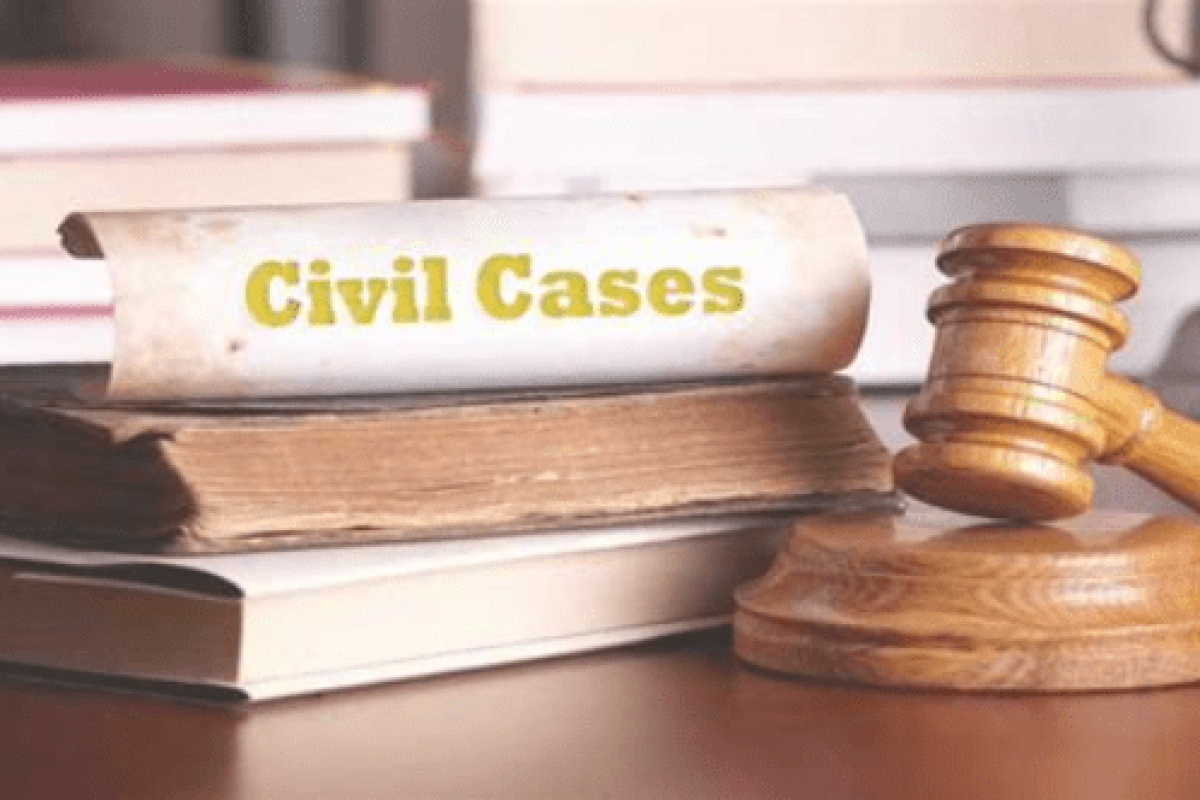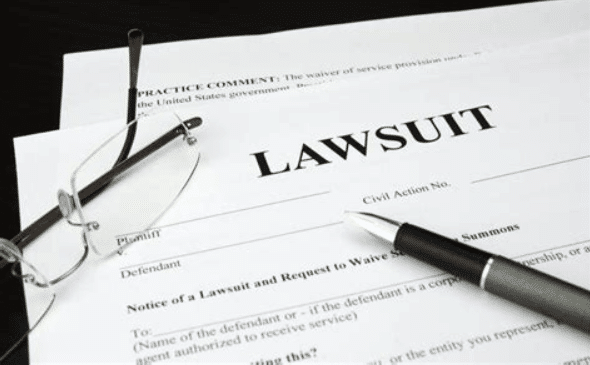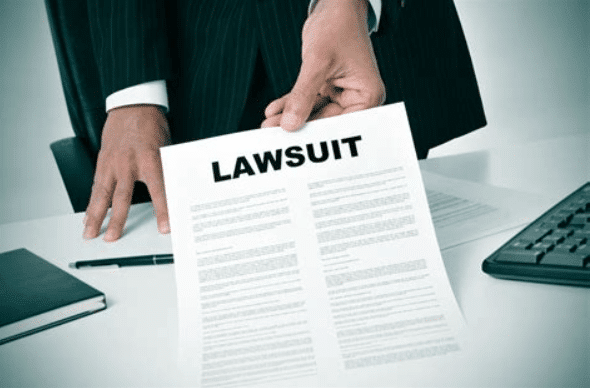Utah does not have a free tool to search for court cases online, but you can pay for a subscription to XChange which gives you access to court records throughout the state. Below is the ZumaZip.com guide to Utah’s civil court structure, how to check your case status there, and how to use the XChange tool to find your court records online.
At the moment, Utah courts do not have a free tool where you can search the status of your court case online. However, there are some paid options for searching for your Utah court case online.
XChange case search can get you access to District Court and Justice Court information, for a cost. Debt collection lawsuits almost always fall under the jurisdiction of one of these court.
Right now, the cheapest way to check your case status is through calling the court clerk or visiting the courthouse in which your case is filed and using XChange there.
If you’ve been sued for a debt, it’s crucial to keep tabs on your case. Frequently, collectors don’t properly serve defendants with the case documents. So, finding your case online is helpful for reviewing the progress of your case.
Finding your case isn’t always easy, so in this article we’ll show you what you need to know about searching for your court case in Utah. But first, let’s talk about Utah’s debt collection lawsuit procedures and its civil court structure.
Sued for debt in Utah? Use ZumaZip Settle to settle your debt for good.
What is the procedure for handling debt collection cases in Utah?
A debt collection case is started when a debt collector files a Complaint with the court. One of the methods of service listed in Utah Rule of Civil Procedure 4 must be used to serve a copy of the Complaint and a document known as a Summons to the debtor.
The Summons notifies someone that they are being sued, while the Complaint lists the specific claims that are being made against them.. If relevant, the Complaint should include the amount owing and details regarding the debt and any buyers or assignees.
The defendant must subsequently respond with an Answer to the Complaint, which allows them to agree or disagree with each of the plaintiff’s allegations, as well as to assert any affirmative defenses or file a counterclaim. A counterclaim may be filed if the defendant feels the plaintiff has violated the FDCPA.
Understand the structure of Utah courts
Utah’s State Court System consists of two appellate courts, the Supreme Court and the Court of Appeals. Additionally, there are trial courts, including the District, Juvenile, and Justice Courts, and administrative bodies, such as the Judicial Council and the Administrative Office of the Court. Each of the state’s eight judicial districts has a district court, a juvenile court, and a justice court.
In order to find your case information online or in person, it’s important to understand how the civil courts are structured in Utah. When you know what courts have jurisdiction over certain types of cases, it will be easier for you to narrow down the court to which your case is assigned. If you are being sued for a debt, your lawsuit is considered a civil case. In Utah, there are four levels of courts that deal with civil cases:
- Supreme Court: This is the court of last resort, or the highest judicial level in the state, and it is considered an appellate court. The Supreme Court deals with civil cases that have been appealed from the Court of Appeals or directly from the District Court.
- Court of Appeals: Also considered an appellate court, the Court of Appeals handles civil cases appealed from the District Court.
- District Court: Handles cases appeals from the Justice Court and all civil cases over $10,000.
- Justice Court: Deals with small claims civil cases that involve up to $10,000.
How can I find Utah court records?
Discovering the courthouse and the type of court keeping such records is the first step when attempting to access records in Utah. Once you know where your case is located, you can check the status of your case using these two methods:
- Use XChange case search.
- Call the court clerk or visit the courthouse.
Now, let’s take a closer look at these two methods.
1. Use Xchange case search
The XChange court case management system is used in Utah by mosts law firms and attorneys. Some Utah court records are kept by XChange and are accessible to interested parties. However, this case management system only allows access to publicly available court data, and it comes with a cost. A paid subscription is required to access court records online, but you can also gain free access to XChange at most district courthouses.
The District and Justice Courts have access to most district courthouses’ case files. Interested parties can check with the District Court or the Justice Court to see whether any free public XChange terminals are available. If not, they can search for the relevant records using the premium XChange subscription.
XChange charges a $25 one-time fee to set up an account, and the XChange monthly subscription cost is $40 for up to 500 searches. Any search past the 500-limit cost $0.15/search until the next billing cycle starts.
Xchange details the parties involved, the documents they filed, their residences (if any are known), the proceedings they attended, and the judges who presided over them. The judgments rendered and the results of concluded cases are additional information from court records.
The Utah State Law Library offers free public Xchange access and does not provide information on court records that are not accessible to the public.
2. Call the court clerk or visit the courthouse
Like we mentioned before, most Utah courthouses have terminals set up where you can use XChange to access court records for free. So a quick trip to the courthouse might be worth the visit.
If you don’t have time to travel to the courthouse, you can also try calling the court clerk to ask them to check your case status over the phone. Most court clerks are willing to help and answer as many questions as possible, without giving legal advice.
Use this Utah Courts Directory to find your courthouse address and the court clerk’s contact information.
Use PACER to search for a federal case
The Public Access to Court Electronic Records (PACER) website offers guidance on electronically submitting and obtaining court documents in federal courts. Each state in the US may be subject to either state courts or federal courts. If a lawsuit begins in a state court, it may be bumped up to federal court. Usually, only civil cases with high dollar amounts are in federal court. Debt collection cases are almost always in state court.
Federal cases in Utah go to the 10th Circuit of United States District Courts. Here’s a map of all the federal circuits.
As part of PACER, a federal initiative, the District of Utah retains case data on criminal proceedings since November 1992 and civil proceedings since July 1989 through an electronic database.
The only exceptions to this rule are cases involving social security benefits and those that a judge’s order has sealed. If you decide to use PACER, you will have access to the case docket and any associated case materials. A fee of $0.10 per page is charged.
Identifying federal case numbers
The majority of the federal court’s documents are organized by case number. A case number is given when a case is submitted to the court. The pleadings, or court documents, filed in the case should be included in the case file that is also opened. A case number is necessary to locate any court document.
The court separates several materials. Examples include two series that only include abstracts and briefs and another that only contains opinions submitted by the justices. A case number is necessary to locate any court document.
If the case’s name and the year the decision was made are available, a researcher can search the Utah Reports (Series 1481) volumes for that year’s ruling. A list of cases reported is located at the front of each book volume of the reporter.
A researcher can establish whether a case is in a specific volume by looking through this list and, if it is, the page it begins on. The case number is included in the headnote for each reported case, starting with volume 10 of the Utah reports.
A case file is captured in the docket. Each party, as well as their designated attorneys, is listed on the docket. Each document is listed with a summary, the date it was filed, and the unique court record number.
Obtaining a copy of a docket sheet requires completing a copywork request form and submitting it to the clerk’s office along with the case name of the docket sheet. Each page costs $0.50. It is possible to access dockets by using the PACER system.
Scheduling federal court cases
In most federal civil cases, the court will enter an order to propose a schedule that will provide precise guidelines and due dates for submitting the attorney planning meeting report. As soon as possible afterwards—and no later than 42 days after any defendant has been served or 28 days after any defendant has appeared, whichever comes first—the attorney’s planning meeting report form is finished and submitted to the court.
The presiding judge in a case, or the referred magistrate judge, or if an order directing the case has been made, one should receive a draft of the proposed scheduling order by email at the same time.
The court evaluates the scheduling order based on the attorney planning meeting report filed. The attorney’s planning meeting report form is docketed under the planning meeting event in CM/ECF. This document must be filed electronically in CM/ECF as other documents – attorney planning meeting.
The parties submit a motion for an initial scheduling conference if they cannot agree on a schedule. A hearing may be held by the designated district judge or the referred magistrate judge.
Respond to a debt lawsuit in Utah
Although it’s helpful to know about federal cases, most debt collection cases are handled at the state level. If you have been sued for a debt in Utah, the first step to winning your case is to respond with a written Answer.
In Utah, you have 21 days to respond to a debt lawsuit before you lose by default. When you lose by default, the debt collector (or creditor) suing you can garnish your wages and even put liens on your properties to get the money back.
ZumaZip can help you draft an Answer in just 15 minutes.
What is ZumaZip?
ZumaZip is a convenient solution designed to streamline your response to a debt collection lawsuit. Here’s a breakdown of what you can expect when you use ZumaZip:
Firstly, you’ll access our user-friendly web application, which guides you through the process step by step. You’ll be prompted to answer a series of questions related to your specific situation. Once you’ve completed the questionnaire, you have the option to either print out the finalized forms and mail them to the appropriate courts yourself, or you can opt to utilize ZumaZip’s services to file them on your behalf. Additionally, if you choose this option, an attorney will review your document for added peace of mind.
If you’re seeking guidance on how to effectively respond to a debt collection lawsuit, ZumaZip can provide the assistance you need. Feel free to explore our FAQs for more information on what ZumaZip has to offer.
What if I haven’t been sued yet?
If you’ve only received a collections notice, but not a lawsuit, the best way to respond is with a Debt Validation Letter. When a debt collector contacts you in any way, whether it’s by phone or mail, you can respond by formally requesting a debt validation with a Debt Validation Letter . This letter notifies the collector that you dispute the debt and forces them to provide proof you owe the debt. They can’t call you or continue collecting until they provide validation of the debt. This flowchart shows how you can use a Debt Validation Letter to win.
Get started with a Debt Validation Letter here.
How to Answer a Summons for debt collection in all 50 states
Here’s a list of guides on how to respond to a debt collection lawsuit in each state:
- Alabama
- Alaska
- Arizona
- Arkansas
- California
- Colorado
- Connecticut
- Delaware
- Florida
- Georgia
- Hawaii
- Idaho
- Illinois
- Indiana
- Iowa
- Kansas
- Kentucky
- Louisiana
- Maine
- Maryland
- Massachusetts
- Michigan
- Minnesota
- Mississippi
- Missouri
- Montana
- Nebraska
- Nevada
- New Hampshire
- New Jersey
- New Mexico
- New York
- North Carolina
- North Dakota
- Ohio
- Oklahoma
- Oregon
- Pennsylvania
- Rhode Island
- South Carolina
- South Dakota
- Tennessee
- Texas
- Utah
- Vermont; Vermont (Small Claims court)
- Virginia
- Washington
- West Virginia
- Wisconsin
- Wyoming
Guides on how to beat every debt collector
Hey there! Facing off against a debt collector can feel like a daunting challenge, but fear not! We’re here to help you navigate through it all with our handy guides designed to assist you in beating every debt collector you encounter. Whether you’re facing a new lawsuit or dealing with a persistent collector, we’ve got your back. Stay positive, stay informed, and let’s tackle this together!
- Absolute Resolutions Investments LLC
- Accredited Collection Services
- Alliance One
- Amcol Clmbia
- American Recovery Service
- Asset Acceptance LLC
- Asset Recovery Solutions
- Associated Credit Services
- Autovest LLC
- Cach LLC
- Cavalry SPV I LLC
- Cerastes LLC
- Colinfobur
- Covington Credit
- Crown Asset Management
- CTC Debt Collector
- Cypress Financial Recoveries
- Delanor Kemper & Associates
- Eagle Loan of Ohio
- Educap
- Estate Information Services
- FIA Card Services
- Forster & Garbus
- Freshview Solutions
- Fulton Friedman & Gullace LLP
- Harvest Credit Management
- Howard Lee Schiff
- Hudson & Keyse LLC
- Integras Capital Recovery LLC
- Javitch Block
- Jefferson Capital Systems LLC
- LVNV Funding
- Mannbracken
- Mariner Finance
- Medicredit
- Michael J Adams PC
- Michael J Scott
- Midland Funding LLC
- Mullooly, Jeffrey, Rooney & Flynn
- Mountain Land Collections
- MRS Associates
- National Collegiate Trust
- Nationstar Foreclosure
- Northstar Capital Acquisition
- NCEP LLC
- NRC Collection Agency
- OneMain Financial
- Palisades Collection LLC
- Pallida LLC
- Paragon Revenue Group
- Pinnacle Collections Agency
- PMAB LLC
- Portfolio Recovery Associates
- Provest Law
- PYOD LLC
- Reunion Student Loan Finance Corporation
- Revenue Group
- Regents and Associates
- RSIEH
- Salander Enterprises LLC
- Second Round Sub LLC
- Security Credit Services
- Sherman Financial Group
- Suttell and Hammer
- T-Mobile
- Transworld Systems
- Tulsa Teachers Credit Union
- UCB Collection
- Velo Law Office
- Velocity Investments
- Waypoint Resource Group
- Weinberg and Associates
- Wolpoff & Abramson
Settle your medical debt
Having a health challenge is stressful, but dealing medical debt on top of it is overwhelming. Here are some resources on how to manage medical debt.
- Am I Responsible for My Spouse’s Medical Debt?
- Do I Need a Lawyer for Medical Bills?
- Do I Need a Lawyer to Fight Medical Bill Debt?
- Does Bankruptcy Clear Medical Debt?
- How Much Do Collection Agencies Pay for Medical Debt?
- How to Find Medical Debt Forgiveness Programs
- Is There a Statute of Limitations on Medical Bills?
- Medical Debt Statute of Limitations by State
- Summoned to Court for Medical Bills — What Do I Do?
- Summoned to Court for Medical Bills? What to Do Next
Stop calls from Debt Collectors
Do you keep getting calls from an unknown number, only to realize that it’s a debt collector on the other line? If you’ve been called by any of the following numbers, chances are you have collectors coming after you, and we’ll tell you how to stop them.
- 800-390-7584
- 800-289-8004
- 800-955-6600
- 877-366-0169
- 877-591-0747
- 800-278-2420
- 800-604-0064
- 800-846-6406
- 877-317-0948
- 888-899-4332
- 888-912-7925
- 202-367-9070
- 502-267-7522
Other wage garnishment resources
- Bank Account Garnishment and Liens in Texas
- Can I Stop Wage Garnishment?
- Can My Wife’s Bank Account Be Garnished for My Debt?
- Can Payday Loans Garnish Your Wages?
- Can pensions be garnished?
- Can Private Disability Payments Be Garnished?
- Can Social Security Disability Be Garnished?
- Can They Garnish Your Wages for Credit Card Debt?
- Can You Stop a Garnishment Once It Starts?
- Guide to Garnishment Limits by State
- How Can I Stop Wage Garnishments Immediately?
- How Long Before a Creditor Can Garnish Wages?
- How Long Does It Take to Get Garnished Wages Back?
- How to Fight a Wage Garnishment
- How to Prevent Wage Garnishment
- How to Stop a Garnishment
- How to Stop Social Security Wage Garnishment
- How to Stop Wage Garnishment — Everything You Need to Know
- New York Garnishment Laws – Overview
- Ohio Garnishment Laws — What They Say
- Wage Garnishment Lawyer
- What Is Wage Garnishment?
Guides on Arbitration
If the thought of going to court stresses you out, you’re not alone. Many Americans who are sued for credit card debt utilize a Motion to Compel Arbitration to push their case out of court and into arbitration.
Below are some resources on how to use an arbitration clause to your advantage and win a debt lawsuit.
- How Arbitration Works
- How to Find an Arbitration Clause in Your Credit Agreement
- How to Make a Motion to Compel Arbitration
- How to Make a Motion to Compel Arbitration in Florida
- How to Make a Motion to Compel Arbitration Without an Attorney
- How Credit Card Arbitration Works
- Motion to Compel Arbitration in California
- Sample Motion to Compel Arbitration
Federal Debt Collection Laws Can Protect You
Knowing your rights makes it easier to stand up for your rights. Below, we’ve compiled all our articles on federal debt collection laws that protect you from unfair practices.
- 15 USC 1692 Explained
- Does the Fair Credit Reporting Act Work in Florida?
- FDCPA Violations List
- How to File an FDCPA Complaint Against Your Debt Collector (Ultimate Guide)
- How to Make a Fair Debt Collection Practices Act Demand Letter
- How to Submit a Transunion Dispute
- How to Submit an Equifax Dispute
- How to Submit an Experian Dispute
- What Debt Collectors Cannot Do — FDCPA Explained
- What Does Account Information Disputed by Consumer Meets FCRA Requirements Mean?
- What does “meets FCRA requirements” mean?
- What does FCRA stand for?
- What is the Consumer Credit Protection Act
Resolve Your Debt with Your Creditor
Some creditors, banks, and lenders have an internal collections department. If they come after you for a debt, ZumaZip can still help you respond and resolve the debt. Here’s a list of guides on how to resolve debt with different creditors.
- American Express; American Express – Debt Collection
- Bank of America
- Barclay
- Best Buy Credit Card
- Capital One
- Chase
- Credit One Bank
- Old Navy Credit Card
- PayPal Synchrony Card
- Regional Finance
- Retailers National Bank
- Reunion Student Loan Finance Corporation
- SYNCB/PPEXTR
- Synchrony Bank
- Synchrony Walmart Card
- Target National Bank
- Webbank
- Wells Fargo
- Can I Pay My Original Creditor Instead of a Debt Collection Agency?
- Can I Settle a Debt with the Original Creditor?
Check the Status of Your Court Case
Don’t have time to go to your local courthouse to check the status of your case? We’ve created a guide on how to check the status of your case in every state, complete with online search tools and court directories.
- Alabama Court Case Search—Find Your Lawsuit
- Alaska Court Case Search — Find Your Lawsuit
- Arizona Court Case Search – Find Your Lawsuit
- Arkansas Court Case Search — Find Your Lawsuit
- California Court Case Search- Find Your Lawsuit
- Colorado Court Case Search — Find Your Lawsuit
- Connecticut Case Lookup — Find Your Court Case
- Delaware Court Case Search — Find Your Lawsuit
- Florida Court Case Search — Find Your Lawsuit
- Georgia Court Case Search — Find Your Lawsuit
- Hawaii Court Case Search — Find Your Lawsuit
- Idaho Court Case Search – Find Your Lawsuit
- Illinois Court Case Search — Find Your Lawsuit
- Indiana Court Case Search — Find Your Lawsuit
- Iowa Court Case Search — Find Your Lawsuit
- Kansas Court Case Search — Find Your Lawsuit
- Kentucky Court Case Search — Find Your Lawsuit
- Louisiana Court Case Search — Find Your Lawsuit
- Maine Court Case Search — Find Your Lawsuit
- Maryland Court Case Search — Find Your Lawsuit
- Massachusetts Court Case Search — Find Your Lawsuit
- Michigan Court Case Search — Find Your Lawsuit
- Minnesota Court Case Search — Find Your Lawsuit
- Mississippi Court Case Search — Find Your Lawsuit
- Missouri Court Case Search — Find Your Lawsuit
- Montana Court Case Search — Find Your Lawsuit
- Nebraska Court Case Search — Find Your Lawsuit
- Nevada Court Case Search — Find Your Lawsuit
- New Hampshire Court Case Search — Find Your Lawsuit
- New Jersey Court Case Search—Find Your Lawsuit
- New Mexico Court Case Search – Find Your Lawsuit
- New York Case Search — Find Your Lawsuit
- North Carolina Court Case Search — Find Your Lawsuit
- North Dakota Court Case Search — Find Your Lawsuit
- Ohio Court Case Search — Find Your Lawsuit
- Oklahoma Court Case Search — Find Your Lawsuit
- Oregon Court Case Search — Find Your Lawsuit
- Pennsylvania Court Case Search — Find Your Lawsuit
- Rhode Island Court Case Search — Find Your Lawsuit
- South Carolina Court Case Search — Find Your Lawsuit
- South Dakota Court Case Search — Find Your Lawsuit
- Tennessee Court Case Search — Find Your Lawsuit
- Texas Court Case Search — Find Your Lawsuit
- Utah Court Case Search — Find Your Lawsuit
- Vermont Court Case Search — Find Your Lawsuit
- Virginia Court Case Search — Find Your Lawsuit
- Washington Court Case Search — Find Your Lawsuit
- West Virginia Court Case Search — Find Your Lawsuit
- Wisconsin Court Case Search — Find Your Lawsuit
- Wyoming Court Case Search — Find Your Lawsuit


































